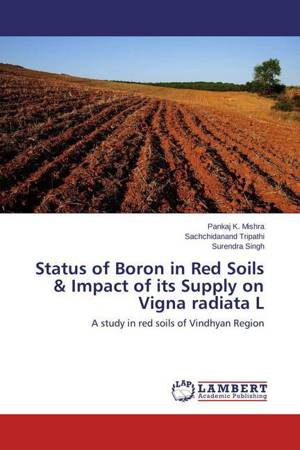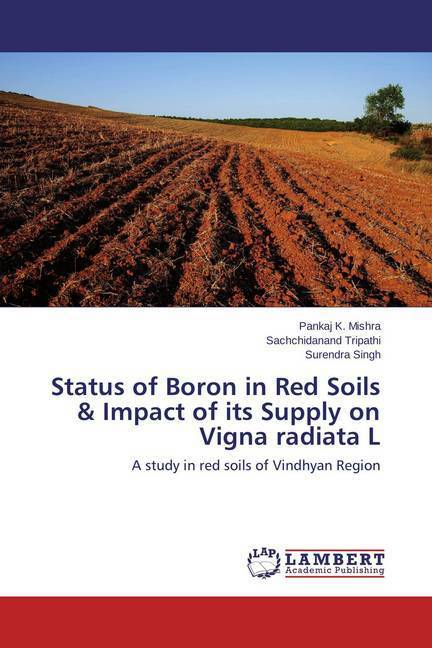
- Afhalen na 1 uur in een winkel met voorraad
- Gratis thuislevering in België vanaf € 30
- Ruim aanbod met 7 miljoen producten
- Afhalen na 1 uur in een winkel met voorraad
- Gratis thuislevering in België vanaf € 30
- Ruim aanbod met 7 miljoen producten
Zoeken
Status of Boron in Red Soils & Impact of its Supply on Vigna radiata L
A study in red soils of Vindhyan Region
Pankaj K. Mishra, Sachchidanand Tripathi, Surendra Singh
Paperback | Engels
€ 70,45
+ 140 punten
Omschrijving
Boron deficiency is a widespread problem for field crop production where large losses of yield occur annually both quantitatively and qualitatively. Boron deficiency in Vindhyan soils is being increased due to light textured soil, low organic matter content and continuous removal by pulses. The entire area of Vindhyan region is rainfed and about more than 50 percent land is suitable for oil seeds and pulses cultivation in upland topography. Generally, farmers do not apply fertilizers in pulses due to lack of knowledge and as a result productivity of the pulses in this region is quite low. At present, little scientific information is available on distribution of boron in surface and subsurface soils. Further, information on response of pulses to boron application in red soils of Vindhyan region is also lacking. We hope the findings will be of interest to agronomists and soil scientist for boosting research on soil fertility, crop production and maintaining soil nutrient budget.
Specificaties
Betrokkenen
- Auteur(s):
- Uitgeverij:
Inhoud
- Aantal bladzijden:
- 208
- Taal:
- Engels
Eigenschappen
- Productcode (EAN):
- 9783659757983
- Verschijningsdatum:
- 13/07/2015
- Uitvoering:
- Paperback
- Afmetingen:
- 150 mm x 220 mm
- Gewicht:
- 313 g

Alleen bij Standaard Boekhandel
+ 140 punten op je klantenkaart van Standaard Boekhandel
Beoordelingen
We publiceren alleen reviews die voldoen aan de voorwaarden voor reviews. Bekijk onze voorwaarden voor reviews.








